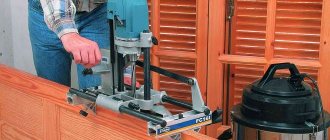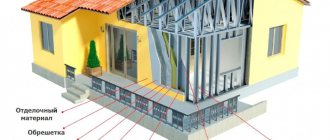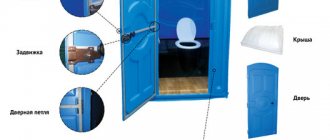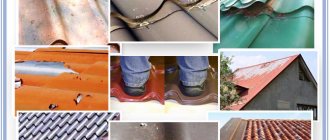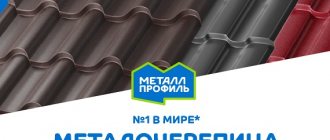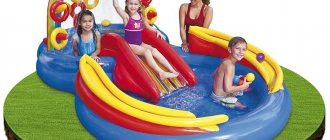To date, not a single method of tapping into a water supply system is known. It all depends on the quality and variety of materials used in production. Consumables can be: cast iron, polypropylene or steel. Buying a clamp is not difficult, namely, in any hardware store or plumbing department.
Varieties
Clamps are presented on the construction market in a wide range.
Models are produced in a wide variety of standard sizes and are divided according to such characteristics as the method of fixation, the presence of a seal, shape, material of manufacture and purpose. Based on the material used, products are divided into plastic and steel. Moreover, steel elements can be made either with or without galvanization. Compared to plastic models, steel clamps are considered more in demand and popular. This is due to the low cost of the products, good tensile strength of the metal and high strength. The disadvantage of metal clamps is the low resistance of non-galvanized models to corrosion processes. Therefore, in cases where the installation of clamps is planned in extremely humid rooms, you should choose models made of stainless steel or clamps coated with zinc.
Plastic options are characterized by increased elasticity, high resistance to vibration and the ability to create movable fixation. Models can be used for fastening pipelines with a diameter of no more than 10 cm.
Depending on the tasks assigned to them, clamps are divided into spiral, power, wire, worm, pipe and mortise options.
A spiral clamp is a fairly common device and is intended for rigid fixation of pipes in the system.
The power one has the shape of a tape with holes for bolts and is indispensable when working on lines with increased operating pressure, at pumping stations, pneumatic and hydraulic systems.
Wire clamps are presented in the form of one or several steel rings equipped with tightening fasteners. The model is designed for corrugated pipes and is indispensable for fixing them during strong movements.
The worm model is a steel strip with a track, equipped with teeth and screws for tightening. The model is used in the construction of heating systems, as well as as a fixing mechanism for pipelines exposed to severe vibrations.
Pipe clamps are presented in the form of rings with brackets and are installed to secure the pipeline in cases where it is necessary to reduce the internal stress in the system during repairs.
The spring clamp has a fairly narrow specialization and is used on pipes subject to linear expansion.
A mortise, or saddle, clamp with a branch is a more complex mechanism and is designed for installation in places where the pipeline branches. Its main difference from traditional models is the presence of a coupling equipped with threaded pipes, which allows you to insert the clamp into the system and quickly connect an additional branch. The tightness of such a connection is ensured by a gasket located inside the clamp and made of profiled rubber.
Pivot models, also known as hinge locks, are used to install scaffolding and are used when attaching diagonal type braces. Thanks to the rotary clamps, all elements can be fixed at any angle, which gives additional strength to the structure and ensures its stability.
According to the type of fixation, all clamps are divided into two types:
- The first include models that form a rigid type of fastening, in which the pipe becomes completely motionless. The crimping brackets of such products are securely tightened with bolts, and the clamp itself is firmly attached to the wall. This type of fastening is used in areas where the pipeline bends and in the presence of branches.
- The second type includes models with movable fastenings, used for fixing heating and hot water pipes. The specificity of the fastening does not create obstacles to the elongation and compression of the pipeline and ensures its longitudinal mobility. As a result, an optimal line voltage is created, significantly extending the life of the networks.
Structurally, clamps are available in several types:
- a split ring, formed in the form of a circle and having one fastening mechanism, fixed with a bolt;
- a ring consisting of two semicircular plates and having fastening ears on both sides;
- a tape folded into a ring and having several positions for fixation;
- A U-shaped model, often made of plastic, equipped with a locking latch and capable of being attached in a rigid and movable manner at the same time.
Using clamps
Fastening pipelines using clamps is very similar to the previous installation option, however, such fastening also has some features that are worth paying attention to:
- The main difference between clamps and clips is that the former have a closed design. Thus, when securing a pipe, you first need to open the clamp, and only after that the pipe snaps into it. The assembled structure is more reliable and durable. This type of pipe fastener is ideal if you need to fix a section of communication located in a vertical plane to the wall;
- Today on the construction market you can find two types of such devices. The first type includes products in which the self-tapping screw is connected directly to the dowel and pipe fastening. In the second case, the part that clamps the pipe does not fit with the screw, which allows you to easily remove the pipe from the clamp;
The clamp is a closed version of the clip; in order to insert a pipe into it, you need to open the upper part - the clamp
Note! When purchasing a pipe clamp, it is recommended to pay attention to the quality of the latches.
- There is a separate type of clamps, which differs in that it does not have a dowel. For such products, you must purchase a dowel separately. The main advantage of these clamps is their low cost, so purchasing such devices will save on pipeline installation.
Most often, clamps are used for fastening metal-plastic communications that require reliable fixation on the working surface. The installation of these fasteners is practically no different from the installation of clips; however, differences in the design of the fastener require its preliminary opening.
Pipe installation methods
The key stage in creating a sewer system is fastening the sewer pipes. Fixation in a certain position ensures the strength of the system and allows you to disguise the pipes with lining materials. Hidden installation requires tightness and reliability of connections. Leaks that occur under finishing materials will not be immediately noticeable. They are often reported by downstairs neighbors when the problem is already large enough.
There are two ways to install the system. They differ from each other in the position of the pipelines relative to the plane of the floor, wall or ceiling. Let's take a closer look at these methods:
Closed
Closed installation involves laying sewer lines into a recess made in the supporting plane. Before starting installation work, markings are made, along which gating is carried out. The depth of the groove is chosen so that the pipe is completely hidden in the surface of the support. This method allows you to hide the elements of the system and eliminate the formation of unnecessary ledges or boxes. In addition, fastenings for sewer pipes become optional. The disadvantages of this option are:
- The thickness of the walls should allow making a recess of the required size. In typical apartments this method is not always suitable. Most often, this option is used in private houses or apartments of old construction, with brick walls;
- Making a groove requires a lot of labor. As a rule, water communications are hidden in the wall at the same time as the sewer system. This increases the amount of work and requires more preparation time.
The advantage of closed installation is a neat and smooth wall surface. After laying the tiles, no elements of the system remain visible. This allows the use of wall mounted plumbing fixtures.
Open
Open pipe installation is much faster. A special fastening of sewer pipes to the wall is used, which reliably fixes the pipes in the desired position. The specified slope is ensured, the position of the system elements remains unchanged. The disadvantage of this method is the open arrangement of the pipes. When finishing, they have to be hidden under the cladding, for which a box is first built. This takes up space in a room that is already not very large. However, in apartments with concrete walls this method has practically no alternative.
Anchor shackle
The new product, which allows fixing two adjacent pipes, has greatly simplified the task for craftsmen and owners of new houses.
The bracket consists of a dowel and two plastic brackets, shaped like an anchor. This part is designed to hold only pipes under a warm water floor.
Types of fastening structures
Load-bearing fastening structures are divided into the following types:
- Fixed supports. When using this fastener, angular or linear movement of the fixed areas is not allowed.
- Guide supports. The use of this design allows displacement in only one direction. As a rule, only along the horizontal axis.
- Hard pendants. Movements are permissible, but only in the horizontal plane.
- Spring suspensions and supports. Movements are possible both in the vertical and horizontal planes.
Types of fastening pipelines to the wall
Requirements for supports and suspensions
If fixation occurs between two fixed supports, movements that may occur as a result of changes in temperature conditions, installation stretches or displacement of supports must be self-compensating. But such compensating ability, as calculations show, is sometimes not enough. In this case, special compensators must be installed.
The pipe clamp is equipped with a screw/bolt
They are made from pipes of the same type and diameter as the structure as a whole. Most often they are made in the form of the letters “P” or “G”.
If the structure is fixedly fixed, the fastenings must withstand the weight of the pipeline itself, the liquid that moves along it, as well as axial loads generated by thermal deformation, vibrations and hydraulic shocks. When installing polymer products, movable supports are most often used.
If the installation is carried out in fixed supports, restrictive rings or segments 10-20 mm wide, which are made from pieces of pipes of the same plastic, are welded to the pipes. These segments or rings should be located on both sides of the support.
Selection of fastening elements
Suitable fastenings are selected taking into account many factors. The choice depends on the location of the installation site, the purpose of the specific system, and so on.
Fastening a plastic pipe
Sometimes the pipe must be insulated from the source of cold or heat. If you use a simple clamp that fixes the area, then it will not provide the gap from the adjacent surface necessary to solve the problem. But, for example, a ring support, which has a threaded extension and a plate for fastening to the supporting surface, will completely eliminate the problem.
If you have to fasten heavy cast iron pipes, then use special fasteners that can withstand heavy loads. For vertically located systems it is installed on the floors. Horizontally oriented systems are fixed not even one at a time, but in groups of pipes laid on a console.
A competent approach to the selection and placement of fasteners allows you to operate the pipeline for a long time and efficiently, without fear of emergency situations. But we should not forget about the economic component of this problem. After all, exceeding the required and sufficient number of elements can lead to an unjustified increase in the cost of the structure and complication of installation work.
Advantages of plastic fastening
A modern alternative to metal parts are fasteners made of plastic. The production uses universal PVC, polystyrene and polypropylene.
The advantages of these devices include:
- Strength, which is slightly inferior to metal parts.
- Light weight of the structure, which significantly reduces the load on the pipes and the underlying wall.
- Long service life, which is in no way inferior to metal parts.
- A huge selection of available forms of fastenings (anchors, brackets, brackets).
In addition, such products are very convenient to transport, for example, when delivering parts to a dacha. All stages of construction and installation work can be easily carried out using plastic fasteners.
Pipeline attachment points
There are several options for piping placement:
- to Wall;
- semi;
- to the ceiling.
The most commonly used method is to attach pipes to the wall. This way, less material is wasted and unnecessary bends are eliminated. Reduces the risk of blockages. However, in older houses, pipes are often recessed into the floor. This option is even more effective, since the level of placement of the system is guaranteed to be lower than the plumbing drain sets. Sometimes sewerage is attached to the ceiling. This is a convenient option if the riser goes into the basement of a private house. The pipes do not get in the way underfoot and do not take up space along the walls. In addition, the pipes can be fixed under a suspended ceiling. To do this, they must be lowered to the floor below, or a pump for waste liquids must be used.
Species diversity
In addition to functionality, when choosing fixing elements for a pipeline, the installation method and external data are considered. The option of using products once or several times is also taken into account. Let's take a closer look at what can be used to attach polypropylene, metal-plastic or metal pipes to the wall.
bracket
Functional fasteners are relevant for laying utility lines along walls, floors and ceilings. The clamp is used for working with water pipes with heated coolant. That is, installation is carried out using a floating method.
The design looks like this:
- Console. Made from metal or polymers. It has a curved shape with a base for attaching plastic and metal pipes to the wall. May consist of one or two parts. This is a supporting part that allows you to secure the pipeline at a small distance from the base.
Bracket for manifold channels Source shopify.com
- Accessories. A bolt with washers and a nut to close the ring in a given position. There may also be additional suspensions and clamps, rubber seals.
The individual components are fastened together without welding. This way you can adjust the diameter of the bracket. Installation of fasteners can be done using self-tapping screws, dowel-nails, anchor bolts or a welding machine.
Clip
For the manufacture of fasteners, polystyrene with fibrous inclusions made of polyester is most often used. Less common are plastic products with similar performance characteristics. This takes into account the preservation of quality under changes in temperature conditions. This explains the main application - fixing hot and cold water supply channels.
The shape of the clips is similar to a bowl with a widened base and narrowed edges. This is necessary for fastening polypropylene pipes by snapping. The range includes single and double products for separate and parallel fixation of water channels. The second type can be extended using special connectors or mounting protrusions (a protrusion and groove are provided in the side of the base).
Pair clip Source leroymerlin.ru
According to their design, clamps are divided into two types:
- solid cast with a dowel (easy to use, but cost a little more than analogues);
- simple or collapsible in the shape of a bowl without additional elements.
Clamps are used for pulling pipelines made of metal-plastic and polymer alloys (rigid, flexible and corrugated channels). The outer diameter of the channel is limited to 5(16) to 50 mm. This is enough for the private sector.
The main advantages of such fasteners are simple installation, reusable use and the ability to fit into the interior. The disadvantages include two points. Application limited to lightweight polymer pipelines. Fragility, ductility and low mechanical strength can lead to breakage or deformation of the “bowl” walls. This mount requires complete replacement, as it cannot be restored.
Installation includes three steps. Before fixing the pipe to the wall, markings are applied to the base. Next, the clip is fixed on the working surface using a self-tapping screw or dowel-nail. The final step is to insert the pipe by pressing the channel into the clip with slight pressure.
Clips with dowel for mineral base Source stroykaydoma.ru
Types of fasteners
The standard fastening for sewer pipes to a wall or other support is a special clamp. This is a universal element capable of holding any round pipelines. There are different types of fasteners:
- crimping Capable of simultaneously performing two functions - holding the pipeline and sealing the connection;
- guides. Used only to indicate the position of the pipe relative to the supporting structure;
- supporting They can fix pipes to vertical and horizontal planes - to walls, floors or ceiling slabs;
- safety. These elements are installed as additional support for complex system components.
To assemble PVC sewer systems, fasteners for sewer pipes of 110 or 50 mm are used. These are the most common sizes for vertical and horizontal pipelines.
Two types of installation are used:
- hard. The pipeline is tightly clamped with a clamp and fixed in a stationary state. This method is used for vertical pipelines (risers) that require complete immobility;
- mobile. The pipeline has the ability to move inside the clamp. This method is used for horizontal pipelines (beds), which do not need to be rigidly attached to supports. Mobility allows you to compensate for thermal expansion of the plastic.
In order to ensure free movement of the pipe, fasteners of a larger diameter are chosen. Any sewer clamp is manufactured in accordance with pipeline standards. Before starting assembly, you need to count the number of clamps
It is important to consider which areas will be rigidly fixed and which will be movable
Plastic clamps
These are fasteners made of PVC of the same brand as the pipelines. There are clamps for all available diameters of system parts. The design of fasteners varies according to the assembly method:
- an element of two halves connected with screws. It is attached to the supporting planes using a pin screwed into a dowel. Provides a strong and rigid connection;
- clamp equipped with a movable latch. The pipe is inserted into the bracket, and the latch wraps around it from above and is fixed on a special protruding tooth.
The first type of clamps allows you to adjust the distance from the wall to the pipe. This is provided by a pin, which can be immersed deeper into the wall or slightly unscrewed from the fastener itself. The second type is convenient for assembly, as it does not require the use of additional tools. In this case, clamps with a latch are tightly attached to the support at a fixed distance from it.
Metal clamps
Metal fasteners are load-resistant. They usually consist of two halves that are connected with screws. Both parts have rubber gaskets that seal the connection and cut off the metal from the pipeline. Before fixing the sewer pipe to the wall, you only need to mark the axis and place the clamp installation points on it
It is important to remember the need to create a slope, for which the axis is immediately placed at an angle. For a diameter of 50 mm it is 30 mm for each meter of length
Let's look at how to attach sewer pipes to the wall using metal clamps. The studs for such fasteners have two types of cutting. At one end there is a thread for attaching the lower half of the clamp, at the other there is a standard thread, like a screw. When installing, first drill a hole for the dowel. Then install the stud using a wrench or pliers. The gap between the two types of cutting is shaped like a hexagon. This section is used to install the element into the dowel. The last step is to screw the clamp half onto the stud. Then all that remains is to install part of the system and screw the upper part of the fastener.
Advantages of metal fasteners
Today, the most famous are two types of fasteners used to organize pipelines: those made of metal and plastic.
The advantages of metal devices include:
- Particular strength. The most popular fasteners are made of steel, which are resistant to moisture, abrasive compounds and chemically aggressive solutions.
- Wide range of applications. Metal fasteners are used for all types of pipelines, regardless of their purpose.
- Wide selection of fastening types. These can be clamps, staples of various shapes, brackets, anchors, studs, bolts.
- Possibility of part repair.
By giving preference to metal structures, the owner of a house or cottage chooses high quality and durability of use. However, heavy weight and lack of ductility are significant disadvantages of iron parts.
In addition, a low-quality manufacturer may violate the fastener manufacturing technology, which will lead to corrosion and rapid destruction of the part.
Distances between pipeline supports according to the SNIP table
A correctly selected distance between the support fasteners is one of the operating conditions for the system. The supports allow you to distribute the load, minimize stress, and in certain cases - when arranging heating mains, for example, distribute the temperature load.
SNiP standards include requirements for the distance between supports for pipelines with different diameters, wall thicknesses and purposes. Such data is entered into special tables, which greatly facilitates calculations. It is worth remembering that the table does not contain recommended data, but an exact indication, corresponding to SNiP, how many and what structures are needed.
The table of distances between pipeline supports given in the article concerns sliding structures for steel pipes.
| Outer diameter, mm | Wall thickness, mm | Maximum distance between supports, m | Accepted distance for above-ground and underground installation, m | Accepted distance for underground installation in impassable channels, m |
| 25 | 2,5 | 2.5 | 1,9 | 1,9 |
| 32 | 2,5 | 3,2 | 2,7 | 2,7 |
| 40 | 2,5 | 3,9 | 3,0 | 3,0 |
| 57 | 2,5 | 4,9 | 3,8 | 3,8 |
| 76 | 3,0 | 6,4 | 4,9 | 3,8 |
| 89 | 3,0 | 6,9 | 5,3 | 4,1 |
| 108 | 3,5 | 8,3 | 6,4 | 4,9 |
| 133 | 4,0 | 9,6 | 7,4 | 5,6 |
| 159 | 4,0 | 10,4 | 8,0 | 6,1 |
| 219 | 4,0 | 12,8 | 9,8 | 6,4 |
| 273 | 4,5 | 14,7 | 11,3 | 7,9 |
| 325 | 5,0 | 16,6 | 12,8 | 8,3 |
| 377 | 5,5 | 18,3 | 14,1 | 9,2 |
| 426 | 6,0 | 19,8 | 15,2 | 9,9 |
| 530 | 7,0 | 22,7 | 17,5 | 11,4 |
| 630 | 8,0 | 25,6 | 19,7 | 12,8 |
| 720 | 8,5 | 27,7 | 21,3 | 13,9 |
| 820 | 9,5 | 30,3 | 23,3 | 15,2 |
| 920 | 10,0 | 31,9 | 24,5 | 16,0 |
| 1020 | 11,0 | 33,6 | 25,8 | 16,8 |
The distances between the supports of steel pipelines with equal wall sizes are determined by the diameter. The characteristics of the soil during underground installation also influence. In addition, when installing thermal routes in accordance with SNiP, the distance is affected by temperature deformation. For heating mains, only movable supports are used in order to create an installation offset to compensate for thermal expansion.
Product design and features
A saddle with a threaded outlet consists of several structural elements and is conventionally divided into 2 parts:
- the lower half, which is equipped with clamps and belts. They perform a fixative function;
- the upper half, which includes a special cover with a hole. The new branch is joined through this hole.
The saddle, mounted on a cast iron or steel pipe, is firmly fixed with a clamping bolt. The rubber sealing ring allows you to achieve high levels of tightness. There are models that can be installed using welding. Such products are considered more advanced.
The use of fittings such as saddles allows you to reduce financial costs when installing various pipelines, as well as reduce installation time. The saddle is mounted on a steel pipe quite simply. It is fixed in the right place using elastic fasteners and tightened with bolts. After this, a hole is drilled and the resulting connection is checked.
The metal saddle is fixed to the pipe using coupling bolts
If the installation of this device is carried out on a pipe made of polyethylene (PE) or low-density polyethylene (HDPE), then the process is even simpler and faster. It is necessary to connect the part and the pipeline using the diffuse welding method and everything is ready.
Fastening rules and technology
Installation of sewer pipeline holders requires compliance with certain fastener installation rules and technological conditions.
- The attachment points are determined directly near the socket connections and branches in order to increase the rigidity of the pipeline (pictured).
- The installation of fixed fasteners is alternated with floating ones. At the same time, it is taken into account that between rigid fastening units the rules allow the placement of no more than two movable compensating connections.
- The distance and distance between rigid and movable holders must also comply with the standards. Thus, rigid supports on polypropylene pipes with a diameter of 110 mm are attached at a distance of no more than 2 m, floating ones - at a distance of no more than 10 branch diameters.
- On horizontal sections of the sewer system, the slope should be 20 mm for each meter of communication.
To Wall
Installation of fasteners is carried out in the following sequence.
- Using the wiring diagram, mark fixation points on the wall taking into account technological requirements.
- Installation begins from the bottom of the riser, where a fixed support is installed. Subsequent fasteners are made in such a way as to ensure alignment and verticality of all segments.
- When the riser is installed correctly, its deviation from the vertical axis should not be more than 2 mm per meter of pipe.
- Further fixation of the pipeline to the wall surface is done with clamps or clips (if the cross-section of the bends does not exceed 50 mm).
- Plastic and metal clamps are fastened using a self-tapping screw or metal pin with a fastening pitch for polypropylene bends - 2 m, metal-plastic - 1.5 m, steel - 1 m.
- In critical places where heavy elements of the system are located, rigid supports are used.
- Brackets are used to provide distances from the wall of waste pipes.
To the ceiling
Installation of sewer outlets along the ceiling is carried out in the basement and is carried out using the same methods.
Features are:
- Fixing clamps with anchors.
- The use is mainly of floating supports.
- Use of hanging fastener with strap.
- Minimum distance between holders.
To the floor
As a rule, cast iron sewer pipes are not attached directly to the floor. Polymer ones, in contrast, can become deformed and sag, which will affect the slope. If it is not possible to attach them to the wall, they are attached to the floor using plastic clips and galvanized screws.
According to building codes, laying sewer outlets in the floors of residential and administrative premises is not allowed. In other places, it is possible to carry it along the floor using hidden wiring in the concrete screed.
Installing waste pipes along the floor is practiced in bathhouses, where they discharge wastewater into drainage pits.
In the basement
The basement is an unheated room. There is a high temperature difference here and the problem of thermal expansion requires resolution. Fixed supports in basements and technical undergrounds of buildings alternate with floating fasteners.
Fastenings often have to be made along the floor and to the ceiling; for this, various types are used: clamps with studs, hangers with punched tape, plastic holders with galvanized screws.
Briefly about the norms and requirements
The installation of utilities for water supply from thermoplastic pressure pipes is carried out taking into account the requirements prescribed by GOST 52134 of 2003. Here we consider the technical conditions for fasteners, fittings, connecting parts and tubular products made of polypropylene, polyethylene, PVC and similar connections.
Another regulatory document is SP 40-101 of 1996. Here are the rules for the design and installation of cold and hot water supply systems made from polypropylene products. These are recommendations for building codes that were drawn up in the period 1980-1985.
The preparation of design documentation and installation work on the installation of steel communications are regulated by GOST 32569 of 2021. Maintenance of large and industrial facilities is carried out under the guidance of the current GOST 14202 of 1969. Here we consider networks for transporting various types of liquids, gases and, less commonly, dry mixtures.
Kinds
Depending on the design, the following types of brackets for chimneys are distinguished:
Starting
This is the most durable and powerful type - the entire chimney rests on it. Usually it is made of two cantilever triangles made of a durable metal profile with a wall thickness of 1-3 mm. From the wall side and from the street side they are connected by jumpers, giving additional rigidity to the structure. A support platform with a cutout for inspection and a tap for draining condensate is attached to the top. Sometimes, instead of a platform, another jumper is used, and the lower edge of the pipe rests on a square contour.
Chimney support bracket
Wall (wall)
These are lighter structures, they do not carry a weight load, their function is limited to fixing the vertical position of the pipe. They are a split ring and a lightweight cantilever structure connecting the clamp and the wall mounting panel.
Manufactured by stamping and welding from stainless steel, galvanized or painted ferrous metal.
At a small distance from the wall (up to 100 mm), a metal plate located perpendicular to the wall can be used to connect the ring to the mount. Part of the split ring is welded to a semicircular cutout in this plate, and the other end of the plate is bent and attached to the wall.
At a large distance, the ring is attached to the plate with two consoles made of metal profiles.
Wall bracket for chimney
Telescopic
In such designs, you can change the distance from the ring to the wall; one square profile tube can move inside another. Such brackets are very convenient for installing a chimney on a wall made of solid logs and on other uneven surfaces. After adjusting the extension of the tube, they are fixed with a bolt and nut. A telescopic pipe mount is less reliable than an all-welded one, so they have to be made from a profile of a larger cross-section.
Telescopic pipe mount
Heels
Lightweight budget mount. It uses a standard pipe clamp welded to a threaded rod. The pin is wrapped into a wooden wall or into a dowel. Due to the single point of attachment to the wall, rigidity and ability to withstand wind loads are reduced.
Bracket with studs
Console
This mounting option does not use crimp rings or clamps; the chimney is attached to a pair of cantilever guides. With this method of fixation, the ability to withstand lateral wind loads is reduced. Recommended for budget-friendly starting fastening of indoor chimneys. fastenings
Bracket for fixing pipes
The bracket is made of various metal alloys and is one of the most reliable pipe mounts.
This part is a console with a fastening screw that allows you to fix the pipe at a certain distance from the underlying wall.
The use of a bracket is permissible for hot water supply pipes, where the ability to expand the holding structure is necessary. Due to their shape and reliability of fixation, brackets are widely used to hold pipelines on the wall, on the floor, on walls.
The principle of attaching pipes to the wall
Now let's look at how to attach heating pipes to the wall. There are two ways to accomplish this task: hard and floating. The first is intended for sewers, heating systems and other pipelines through which hot or cold water will be transported. In this case, the fastenings completely fix the movement of communication elements. The fitting here is a rigid support.
Floating mounts most often use clamps that are not tightened all the way. In this case, slight mobility of the system elements is maintained. This fastening option is only possible if the inner diameter of the clamp is larger than the outer diameter of the pipe.
The movable option is used in case of possible temperature changes. After all, then it is possible to expand or narrow the pipes. And loose clamps give them the ability to change sizes while remaining in place. As has already become clear, the choice of fastening option depends on the purpose of the pipeline, as well as possible temperature fluctuations.
General information
In order to ensure the normal level of water at the outlet occurs according to all the rules, it is necessary to observe some important factors:
IMPORTANT
It is extremely important to correctly carry out the expansion to which an additional unit of sanitary equipment will be connected. This also includes the formation of a new contour. For both, you will need a clamp for tapping into the water supply. And in order to maintain the strength of the connection for as long as possible, it is necessary to select the correct shaped element, and then correctly install it.
They resort to clamps when it becomes necessary to cut into the water supply. Such measures are necessary when carrying out renovation work in the apartment, as well as replacing the location or communications. The latter occurs if it is impossible to slow down the incoming water flow or there is no shut-off element.
REFERENCE
Insertion is performed for various purposes. For example, public main-type water supply pipelines also require the use of a clamp. But here it is important to know that this kind of action is not allowed for independent optimization or modernization. Appropriate permission from the authorities is required, otherwise, unauthorized insertion is punishable by administrative and financial liability.
Below are specific common cases in which tapping is necessary:
A new water intake point needs to be connected. (For example: it could be a household machine - washing or dishwasher)- It is necessary to launch the latest installed water consumers. (For example: for a jacuzzi)
- Water pipes are being replaced. At the end of their service life, pipes become unusable, therefore, such measures are necessary. This also includes cases when work is being carried out on the necessary modernization of the SV.
- A similar detail may be required when remodeling a living space, where there will be a complete relocation of bathtubs, faucets, sinks, etc.
- The bathroom will be combined or, conversely, separated.
Construction of a well for the construction of a site
How to make a well.
The rules for installing a central water supply system provide for wells for inspecting the pipe and connecting new consumers. If they are located far from home, it is advisable to arrange them with your own hands at the insertion site. Such a structure will subsequently facilitate the operation of the home water supply system. A shut-off valve is installed in the well; if necessary, the water supply to the house can be stopped.
The pit dug at the connection site is deepened by 0.5 m and filled with crushed stone. Ruberoid is laid on top, 10 cm of concrete grade 200 is poured. To give strength, it is reinforced with reinforcement. A few days later, when the concrete pad has set, a shaft is erected above it. The manhole is given a round or rectangular shape, taking into account that there is 70 cm of free space inside. This is enough to fit a person to operate the valve.
To build a well, use bricks, blocks, or install well rings. If there is a threat of seasonal flooding, the structure is sealed. To do this, the hole is immediately dug wider so that there is access to the outer walls. They are treated with bitumen mastic, wrapped in roofing felt, then covered with excavated soil. You can install a plastic container of a suitable size and seal the pipe entry points well. The top of the well is covered with a lid with a hatch.
Technical characteristics of sandwich pipes
- Material. Basalt fiber (mineral wool) is mainly used as a thermal insulation material. This type of insulation is resistant to high temperatures and chemicals. Mineral wool has excellent thermal insulation/sound insulation properties and is laid with a thickness of 30-60 mm. Due to their fireproof properties, multilayer pipes can be used in houses built from any material. More expensive alloys with a high degree of heat resistance are used for the inner casing.
The inner layer of the sandwich pipe is mainly made of galvanized steel, and the outer layer can be made of copper, brass, stainless steel, etc. The scope of the pipe and the price depend on the content of alloying materials, various alloys and the thickness of the heat-insulating layer.
Sandwich pipes galvanized and stainless steel
- Connection type. Sandwich pipe elements are connected in two ways: corrugated edges and sockets. The advantage of a corrugated connection is ease of installation, but to ensure tightness, a large amount of sealant is required, and this increases the cost of the chimney. With a socket connection, a high degree of tightness is achieved due to the presence of a wider chamfer on one side of the pipe. The advantage is a high degree of tightness, due to which the design can be used for gas boilers. But the downside is the complexity of installation and the need for very precise adjustment of all parts.
Types of sandwich pipe connections
Do-it-yourself tapping method using a clamp
The clamp is used if the line is under pressure or is made of cast iron and plastic pipes, which exclude the use of gas or electric welding.
Tapping into a cast iron water main pipe is done carefully, since the plasticity of this material is low and can burst from excessive force. To drill a hole in a cast iron pipe under pressure, a drill with a feather sharpening is preferable
To prevent water from entering an electric drill or other cutting tool when removing the drill from the hole, it is necessary to make a protective screen from rubber or thick cardboard in advance and secure it between the chuck and the body.
- The connection point is protected from insulation (if any) and from rust.
- An overhead, collapsible clamp is installed on the pipe, with a rubber seal inside, which will ensure sealing of the joint.
- A tap is screwed into the flange outlet through which the cutting tool will be inserted.
- A cast iron pipe is drilled with a drill, if the line is under pressure, after removing the tool, the tap is immediately turned off.
It is a little easier to cut into a water main, which is under pressure and made of plastic pipes, using a clamp than into a cast iron one, since it is easy to drill. The principle of doing the work yourself is not much different from cutting into a cast iron pipe. The only difference is the ability to use a regular, cone drill or bit and make a hole with a hand drill or a brace, since the hole is made very quickly. It is also recommended to install a collapsible clamp, which is placed over the insertion point of the central water supply and soldered to it on both sides. This connection will ensure the tightness of the structure.
- A collapsible clamp is installed and secured.
- The tap is screwed on and opened for further access of the cutting tool.
- A hole is drilled with a drill smaller than the diameter of the upper pipe of the clamp.
- The valve closes after the hole is broken.
We make a tap into a water supply system under pressure with our own hands
When building an individual house, cottage or country house, owners provide for the possibility of providing a residential building with water supply. The most optimal solution would be to connect to an existing water supply system located next to the property.
Typically, the main pipeline is laid along central streets, and for tapping it requires the appropriate permission from the water utility and the preparation of technical documents, since unauthorized connection entails penalties. But if you previously installed a valve that has failed and needs to be replaced, or you have permission and you can cut it in yourself, then with certain knowledge and the availability of tools, you can connect the water supply yourself.
Advantages and disadvantages of sandwich pipes
- The thermal insulation layer prevents the outer pipe from heating to a critical temperature.
- Compact and versatile in use.
- The smooth surface of the inner casing increases the chimney draft.
- Low price compared to ceramic material.
- Operating temperature up to 850 degrees (for single-circuit pipes, for comparison, 5000).
- Easy to assemble.
- The fire safety of the home increases.
- Easy maintenance compared to a solid pipe chimney (less soot accumulation).
- Does not create additional noise when drafting smoke.
The only drawback of the multilayer structure is the decrease in sealing after a long time. Due to sudden temperature changes, air can enter at the junction of sections.
